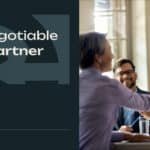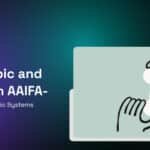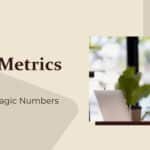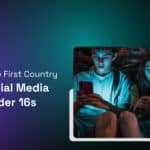Most roadshow events fail. They’re treated as a traveling sales pitch, eroding the buyer’s trust. The solution isn’t a better venue or slicker presentation. It’s seeing buyers as people with context, not just targets for your pipeline.
Let’s be honest. Most articles about “what are roadshow events” are just checklist-driven content. They tell you a roadshow is “a series of events in multiple cities.” This is a definition, not an insight. It’s the kind of “unremarkable and repetitive message” that AI is exceptionally good at producing and that people are exceptionally good at ignoring.
Here’s the reality: a roadshow is one of the most expensive, high-stakes, and logistically fragile campaigns you will ever run. And most companies get it wrong.
They get it wrong because they treat it as a tactic. They see it as a physical version of the “merchant screeching in the market”. They book a room, spam an invite list, and push a sales deck, wondering why buyers seem “wary” and the pipeline remains a “bullshit” list of unclosed deals.
This approach is just another part of the “Lead Gen Negative Loop”. It’s a transactional play in a market that is starving for a “relational” connection. Buyers can sense when you are “after their money” versus when you are there to “help the buyer make better decisions”.
A roadshow isn’t just a traveling event. It’s a physical test of your brand’s core “myth”. It’s where “trust-making” happens (or fails) in real-time. It’s your chance to stop being just another “vendor” and become a “partner”.
Phase 1: Roadshow Strategy and Defining Your “Why”
Before you look at a single venue, you must answer the “what, when, and where” in service of your core purpose. This is the “Myth Making” phase. If your “why” is weak, no amount of logistical perfection will save you.
Most roadshows are justified by “brand awareness” or “lead generation.” These are not objectives; they are wishes. They are the same “nonexistent ROI” leaders chase with poorly implemented AI.
There are only three reasons—three “myths”—that justify the enormous cost of a roadshow.
- Market Creation (The Myth Introduction): You are not just selling a product; you are educating a market. You are launching a new “Design Principle” or “Moral Philosophy”. Your goal is to give buyers “predictive clarity they can’t get elsewhere”. The event is a masterclass, not a pitch.
- Pipeline Acceleration (The Trust Multiplier): You are not finding new leads. You are accelerating existing conversations. You’re using face-to-face contact to deepen trust and move from a “transactional” vendor to a “revenue partner”. The goal is to shorten the sales cycle by proving your “myth” is real.
- Customer Deepening (The Symbiotic Relationship): This isn’t about sales; it’s about “customer relationships”. You’re proving to existing customers that you are a “co-strategist in their growth”. The goal is retention, expansion, and advocacy, built on a foundation of proven trust.
If your plan doesn’t align with one of these three core “myths,” you are wasting your money. You are just “propagating” a problem and contributing to the noise.
Phase 2: Pre-Production and Event Logistics Planning
Once your “myth” is clear, the logistics become an extension of that myth. Bad logistics—a cramped room, terrible audio, cheap food—shatter the illusion and prove you’re not who you claim to be. This is where “taste” becomes a tangible asset.
Define Your Audience: Who Are You Inviting?
Stop calling them “targets.” You are inviting people. Who are they?
- Are they Prospects who are “hyper-aware of their choices” and need to be convinced of your “taste”?
- Are they Customers who need to feel your “empathetic system” and be reassured you are a “partner that can quell their anxieties about the future”?
You cannot be “everything to everyone”. A mixed room of new prospects and power-users often serves neither. Be ruthless in your segmentation. The who dictates the what.
Select Your Markets: Where Should You Go?
Don’t pick cities based on “vibes” or because a sales leader likes the golf courses there. Pick cities based on data.
- Concentration: Where do your high-value accounts and prospects live?
- Context: Where do you have “warm” opportunities that need a high-trust push? Where are the “at-risk” customers who need a high-touch intervention?
- Maturity: Is this a new market that needs the “Market Creation” myth, or an existing one that needs the “Customer Deepening” myth?
Fewer than three cities isn’t a roadshow; it’s a trip. More than five, and your team’s energy and the quality of execution will likely collapse, “eroding” the message.
Choose Your Format: What Will the Event Look Like?
The format is the message. It signals your “myth” before you ever speak.
- Executive Dinner (15-25 people): The ultimate “high-trust” format. Best for “Revenue Partnerships” and “Customer Deepening.” It’s intimate, conversational, and impossible to fake.
- Workshop (30-50 people): This proves your “taste” and expertise. You aren’t pitching; you are teaching. You gain trust through “novelty” and utility.
- Seminar (50-100+ people): The “myth” as spectacle. This is for “Market Creation.” It’s high-risk and high-production. If it’s not “novel”, it will feel like a “repetitive message” and fail.
- Networking/Happy Hour: This is the “copycat” move. It’s low-trust, low-value, and usually devolves into a room of people awkwardly exchanging business cards. Avoid it unless your only goal is a superficial “vibe”.
Build Your System: Team Roles and Budgeting
This is not a side project. You need a dedicated “system” to run it.
- Event Lead: One person who owns the “myth” and the P&L.
- Logistics: The person who handles the “computation”—venues, AV, food, travel.
- Marketing: The person who owns the “trust-making”—the invitation and registration.
- Sales Liaison: The person who ensures the “symbiotic relationship” between the event and the follow-up.
Your budget is a reflection of your “myth.” Roadshows are expensive. If you try to do it cheaply, your attendees will know, and their “trust… will erode”. A $100k+ budget for a 5-city tour is not uncommon. If that number makes you “discomfort[ed]”, you are not ready.
Phase 3: Designing the Content and Attendee Experience
Logistics get people in the room. Your content determines if they stay, listen, and believe.
Most roadshow content is a “thinly-veiled sales pitch” dressed up as thought leadership. It’s “derivative” and “generic”. Your buyers, who are “hyper-aware”, can see this.
Your content must be an “experience”. It must be 80% about their “wants, ideals, dreams, fears, hopes” and 20% about how your “myth” (product) fits into that world.
- Give them “novelty”: Share insights and data they cannot get from a blog post.
- Give them “predictive clarity”: Talk about where the market is heading, not just what your tool does.
- Use “Taste”: The “Aesthetics + Cultural Relevance” of your slides, your speakers, and your language matter. It proves you are not just another “copycat”.
Localize the Myth. Do not be the “system that produced the same thing in the same tone” in five different cities. That’s a “machine”, and it breaks trust. Use local case studies. Talk about local market conditions. Prove you see the people in that specific city, not just a pin on a map.
Phase 4: Event Promotion Strategy and Driving Registration
How you invite is the first test of your “myth.” Is it “spam”? Is it another “transactional” email? Or is it a “relational” offer?
Your invite strategy must be human.
- For Prospects: The invite must come from a human, referencing their specific “context”. The “why” must be about the value they will receive, not your quota.
- For Customers: This is an exclusive invitation to deepen the “symbiotic relationship”. It should feel like a privilege, not an obligation.
Expect a 50-70% drop-off rate for a free event. People are “wary” and over-committed. This isn’t a failure; it’s the “context and constraints of their environment”. Your job is to send personal, human reminders that build anticipation and reinforce the “myth” you promised.
Phase 5: Day-Of Execution and On-Site Management
This is the day the “myth” meets reality. “Bad actors and miscommunication”—or in this case, bad Wi-Fi, bad audio, and long check-in lines—shatter the illusion. They prove you are just “another form of dominance” “exploiting” their time.
The goal is effortless execution. It should feel seamless, allowing the “myth” to be the focus.
Your team’s role is not to scan badges. Their role is to listen. They are there to engage in “trust-based… work”. Every conversation is a chance to understand a buyer’s “context” and “quell their anxieties”.
Capture the context, not just the names. What questions were asked? What “fears” were voiced? This is the “data” that matters, not just a list for your CRM.
Phase 6: Post-Event Follow-Up and Measuring True ROI
The event is over. Your work is not. This is where 99% of roadshows fail. They put all their energy into the event and then drop the ball, reverting to the “negative loop” with a generic, automated follow-up.
The event is not the end. It’s the “fulcrum”. Your follow-up must continue the “myth,” not revert to a “transactional” sales pitch.
- Immediate (24 hours): A human follow-up from the person they spoke to. Reference the actual conversation. The goal is to continue the “symbiotic relationship”, not “close the deal”.
- Nurture (1-4 weeks): Send them more “predictive clarity”. Give them “insights to help people operate in an increasingly uncertain world”. Prove you were listening.
How do you measure this? Not with “leads.” That’s a “nonexistent ROI”.
- Measure Pipeline Influenced: How many existing opportunities in your pipeline attended, and did they accelerate?
- Measure Deal Velocity: Did the “trust-making” shorten the sales cycle?
- Measure Customer Expansion: Did the “myth” deepen the relationship and lead to upsell or renewal?
This is the real ROI. It’s not about the number of badges scanned. It’s about the number of “revenue partnerships” and “co-strategists” you created.
The Final Choice: A Tactic or a Trust-Building Myth?
A roadshow plays a “gargantuan role” in driving your culture. It’s a choice.
You can “keep buyers… in a loop of consumption” with a traveling, transactional sales pitch. You can be the “copycat”, running the same event as everyone else, and wonder why “trust erodes”.
Or you can “take a new route”. You can use the roadshow as a physical act of “trust-making”, a high-stakes investment in proving you “add value to their lives”.
The question isn’t how to plan a roadshow. It’s what you’re building: another empty tactic, or the physical proof of your “myth”?





